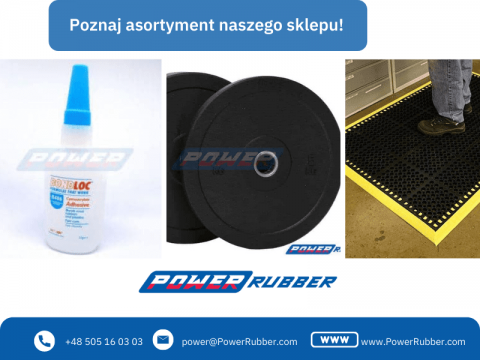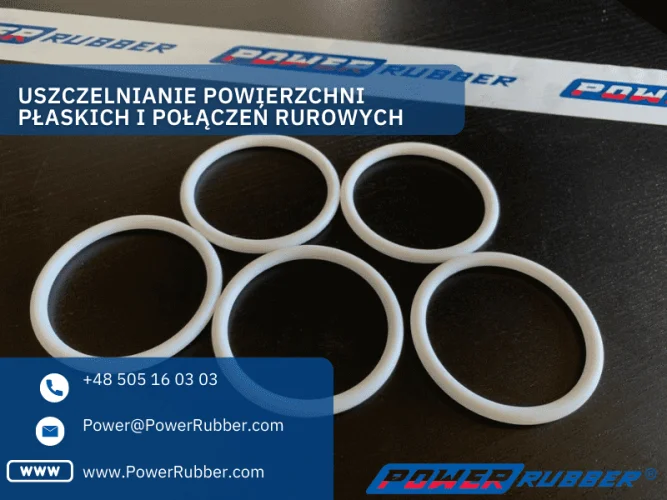Sealing of flat surfaces and pipe connections
Sealing products are useful for many tasks and have a wide range of applications, making them valuable for professionals from various industries. When there are no specific requirements for the sealant, you can opt for universal sealants for flat surfaces. They will be useful in many situations. Particularly noteworthy is the anaerobic adhesive, which hardens when air supply is cut off. It then changes its state from liquid to solid. Such adhesives are easy to use and, most importantly, create reliable bonds between surfaces or threads. Adhesives and sealants for joints can be purchased online from an online store.
Sealing products – types and operation
Products for sealing flat surfaces, pipe connections and other elements tightly fill even the smallest spaces, ensuring the load is distributed across the entire bonding surface, which helps prevent material fatigue. For this reason, sealants have high tear resistance.
These products have high viscosity, so they can successfully be used to seal larger gaps. The market offers a variety of products differing in composition and properties. Options include solvent-free sealants that cure in an anaerobic manner, meaning by cutting off the oxygen supply.
Sealing surfaces exposed to high temperatures
Another type is surface sealants designed for contact with high temperatures – such a product can withstand up to 200°C. Depending on your needs, you can choose sealants for easy disassembly or, conversely, difficult-to-dismantle ones. The adhesive strength can also be selected: there are adhesives providing weak, medium, or strong bonds.
Sealants are also distinguished by their suitability for rigid elements or elastic sealants. In addition, they ensure excellent tightness and protect against corrosion. They can also fill pits and machining marks. Before purchasing, check the sealant’s consistency, whether it does not drip, and if it can be applied to vertical and overhead surfaces. The method of application is also important, e.g., with a roller or screen printing.
Other advantages of sealing products include resistance to industrial chemicals, water, and gas. This is an important feature, as contact with these substances is common in workshops. They are also highly abrasion-resistant, so you can be sure that, for example, thread sealing will be durable, and the adhesive will not unexpectedly crumble.
This also contributes to stiffening and strengthening the connection. Curing time varies depending on the sealant, but you can expect it to occur within 15–60 minutes. Full strength is achieved much later, usually after 24 hours. Thermal resistance is significant – these products are resistant to temperatures from about -50°C to 150°C.
Good-quality anaerobic sealing products are resistant to high pressures and do not change their volume during use, ensuring that joints remain sealed.
The application method is very simple. Just use an applicator to apply a small amount of the product to one of the parts to be joined; the other should be fitted with a twisting motion if it is a thread, valve, or screw. Before using the adhesive, the surfaces should be cleaned and degreased. Interestingly, the pioneer in developing and introducing anaerobic sealants to the market was the German-American company Loctite.

Applications of sealing products
Anaerobic adhesive is a product with a variety of uses, intended for sealing threads, studs, nuts, flat surfaces, and for securing interference fits. Thanks to adhesives and sealants, individual elements do not loosen.
Additional advantages include resistance to vibrations, impacts, and chemicals, which makes these products suitable for use during repairs, maintenance, or on production lines.
High resistance to lubricants, oils, fuels – use of sealants in industry
Moreover, they have high resistance to oils, fuels, coolants, and liquids – substances commonly used in workshops and manufacturing – making them an invaluable aid in such workplaces. They can be used for repairing machines and mechanical equipment.
They are suitable for use in sealing, for example:
- equipment made of steel,
- equipment made of copper,
- equipment made of brass,
- equipment made of aluminium.
Metal acts as a catalyst. In many cases, sealing applies to flat surfaces and pipe connections, but these are not the only uses.
Sealants and adhesives in combustion engines
Adhesives and sealants can also be used in combustion engines, gearboxes, flanges, or vertical parting surfaces. They are often used for sealing threads. They can also seal valves, measuring devices, and other elements, regardless of their position.
Anaerobic adhesive is chosen for securing and sealing pipe and thread connections, sealing surfaces, eliminating gaps, mounting bearings, bushings, gears, as well as for quick repairs. It is important to note the product’s intended use. The manufacturer’s description should be read carefully, as some products are designed only for specific materials. This is indicated by the adhesive’s name.
Some sealants may only be used for bonding metal. The type of metal also matters. Rapid curing occurs with copper and brass, but the strength is lower than with structural steel. It is also necessary to check the maximum gap width the product can fill. Dimensions vary from about 0.05–0.3 mm, and for some products up to 0.5 mm.

